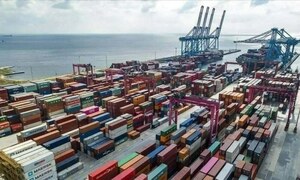Shrinking job opportunities in ME
It is a matter of great concern that the outflows of labour force from Pakistan to the Middle Eastern countries, especially to Saudi Arabia, have dropped considerably in the recent past. The latest available data from the Bureau of Emigration and Overseas Employment show that the manpower export to Saudi Arabia was only 17 percent of the total workers who went to the kingdom in the entire period of 2016 as Pakistan could send only 77,600 workers to Saudi Arabia during January-June, 2017 as opposed to 462,598 workers during January-December, 2016. It may be mentioned that a drastic decline in the export of manpower could adversely affect the inflow of home remittances which fell in 2016-17 after a 13-year growth. This is worrying because the kingdom is the biggest source of home remittances and Pakistani workers based there sent home dollar 5.4 billion which was more than 28 percent of total remittances received during 2016-17. It is believed that situation with regard to other countries is more or less similar as job opportunities in other Arab countries are also shrinking after the collapse of oil prices which have forced them to cut back their development expenditures and provide the maximum number of jobs to their own countrymen. Situation in rich sheikhdom Qatar has been particularly worse due to an Arab embargo on this country and large-scale disruption in business and trade activities which has caused a lot of unemployment. As for returning Pakistanis, although no official data are available, sources claim that about 260,000 Pakistani workers have returned home during the last couple of years.
This is of course a highly depressing development for the country and its impact could easily be seen in the recent fall in the level of home remittances. The trend is particularly disturbing as current account of the country is under great stress as imports are on the up, exports have declined and there are hardly any prospects of employment in the home country for the returning workers. As Middle Eastern countries are not likely to welcome more Pakistani workers in the near future as well due to depressed oil prices in the international market, such a trend is likely to accentuate further. It is to be noted that if the number of Pakistani workers continues to decline in the foreseeable future, it would have serious implications for the external sector which is already cloudy. The inflows from other countries have also tended to slow down. The tightening regulatory environment for anti-money laundering and counter-financing of terrorism (AML/CFT) has contributed to lower inflows from the US while pound's depreciation against the US dollar following the Brexit vote on June 23, 2016 has led to a significant drop in the dollar value of remittances sent from the UK. We know that the policymakers cannot do much to arrest the falling trend in manpower export due to exogenous factors influencing the situation but the development needs to be seriously analysed with a view to designing an appropriate policy response. This newspaper has been advising the government since long to devise appropriate policies, including an adjustment in exchange rate of the rupee for export promotion yet our advice has fallen on deaf ears and exports continue to suffer. We would again urge the government to act fast on export promotion policies and cut back on imports because foreign exchange reserves held by the SBP are dwindling consistently. It also needs to be seen whether the outflow of labour is declining only from Pakistan or other countries like India and Bangladesh are also equally affected by this negative development. This is so because the approach to the problem could be different in each case.

























Comments
Comments are closed.